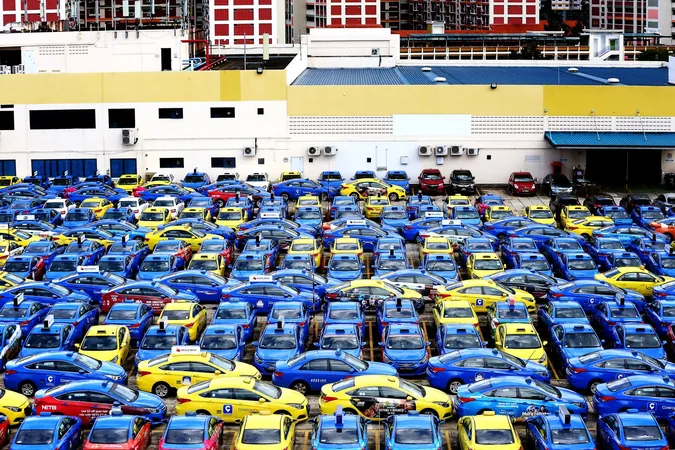
Revolutionizing Chemistry: MIT's Game-Changing AI Model for Predicting Chemical Reactions
2025-09-03
Author: John Tan
Unlocking the Secrets of Chemical Reactions with AI
In a groundbreaking advancement, researchers at MIT have harnessed a novel generative AI approach to drastically enhance the prediction of chemical reactions. Previous endeavors using artificial intelligence and large language models (LLMs) faced hurdles due to a lack of grounding in fundamental physical principles, such as the conservation of mass. However, this new model integrates these essential constraints, significantly boosting the accuracy of its predictions.
A New Era in Chemical Prediction: The FlowER Model
Published on August 20 in *Nature*, the innovative research comes from a stellar team, including Joonyoung Joung, now an assistant professor at Kookmin University, and Connor Coley, a prominent MIT professor. Joung emphasizes the criticality of accurately predicting the outcomes of chemical reactions, especially in fields like drug development, where knowing the likely product of a given chemical input is paramount.
Past models often inspected the initial inputs and outputs but overlooked intermediate reactions and the fundamental mass balance—a key oversight that's now being addressed. As Joung articulates, traditional LLMs, like ChatGPT, can generate outputs that are not physically feasible, likening it to 'alchemy.' Instead of merely providing final products, the new approach meticulously tracks the transformation of all chemicals throughout the reaction.
Building on the Past: A 1970s Method for Modern Solutions
To tackle these challenges, the researchers revived a 1970s method from chemist Ivar Ugi, employing a bond-electron matrix to characterize the electrons involved in reactions. This method culminated in their AI model, dubbed FlowER (Flow matching for Electron Redistribution), which supports a meticulous tracking of electrons to ensure that none are unnecessarily created or eliminated.
As Mun Hong Fong explains, this matrix system effectively conserves both atoms and electrons throughout the reaction process—integral for maintaining scientific integrity.
A Proof of Concept with Limitations and Great Potential
Though still in its infancy, Coley regards the model as a 'proof of concept' that showcases the potential of their generative approach for predicting chemical reactions. With training grounded in over a million chemical reactions from a U.S. Patent Office database, the model reveals exciting predictions but acknowledges notable limitations regarding certain metals and catalytic reactions.
This early-stage database is now available on GitHub, encouraging collaboration and innovation in the field. Coley expresses enthusiasm about achieving reliable predictions of chemical mechanisms while acknowledging the need for further development.
Potential Applications and Future Perspectives
The FlowER model is set to redefine standards, not just matching but surpassing existing prediction methods. Its relevance spans medicinal chemistry, material discovery, and electrochemical systems—offering a promising tool for researchers.
Coley adds, "Our approach uniquely anchors the reactants and products of reactions in data validated by real experiments, a methodology that hasn’t been shared at this scale before." With aspirations to expand understanding of metals and catalytic cycles, the team has only begun to tap into FlowER's full potential.
In summary, while this is just the beginning, the excitement lies in using this technology to uncover complex reactions and elucidative mechanisms, marking a pivotal step toward transformative discoveries in chemistry.


 Brasil (PT)
Brasil (PT)
 Canada (EN)
Canada (EN)
 Chile (ES)
Chile (ES)
 Česko (CS)
Česko (CS)
 대한민국 (KO)
대한민국 (KO)
 España (ES)
España (ES)
 France (FR)
France (FR)
 Hong Kong (EN)
Hong Kong (EN)
 Italia (IT)
Italia (IT)
 日本 (JA)
日本 (JA)
 Magyarország (HU)
Magyarország (HU)
 Norge (NO)
Norge (NO)
 Polska (PL)
Polska (PL)
 Schweiz (DE)
Schweiz (DE)
 Singapore (EN)
Singapore (EN)
 Sverige (SV)
Sverige (SV)
 Suomi (FI)
Suomi (FI)
 Türkiye (TR)
Türkiye (TR)
 الإمارات العربية المتحدة (AR)
الإمارات العربية المتحدة (AR)